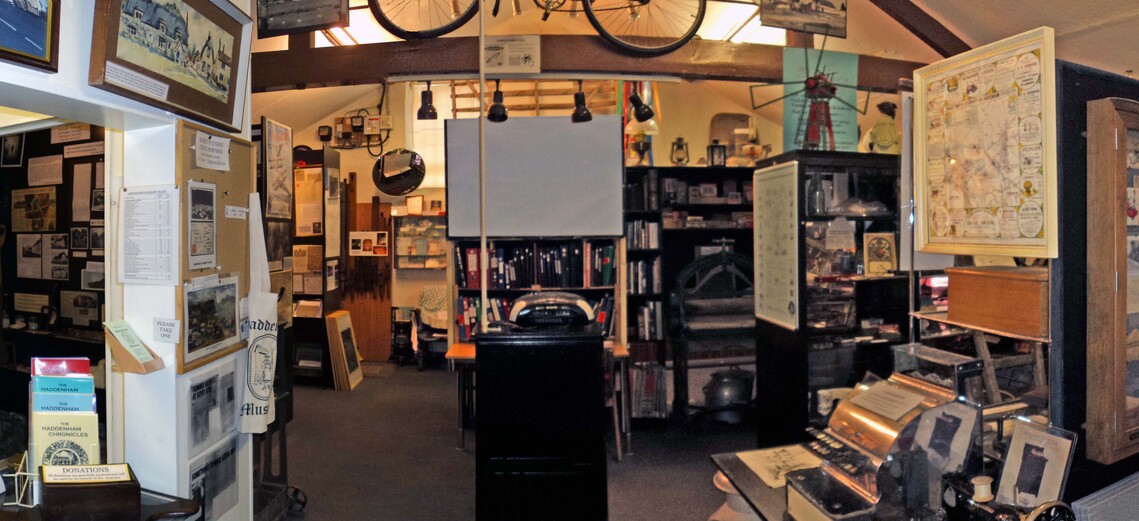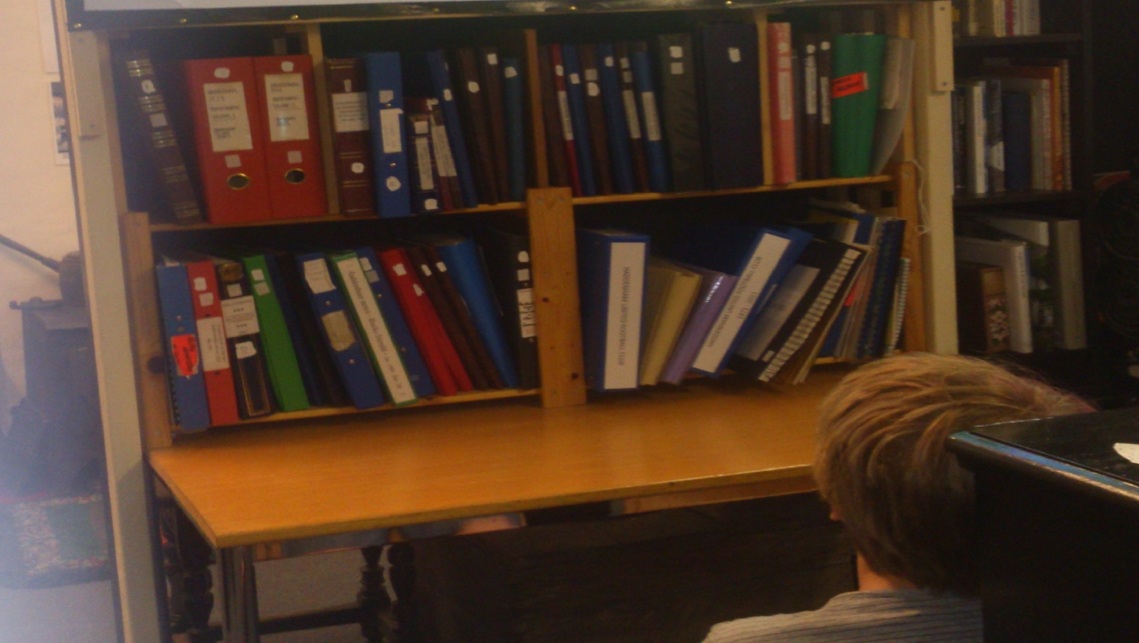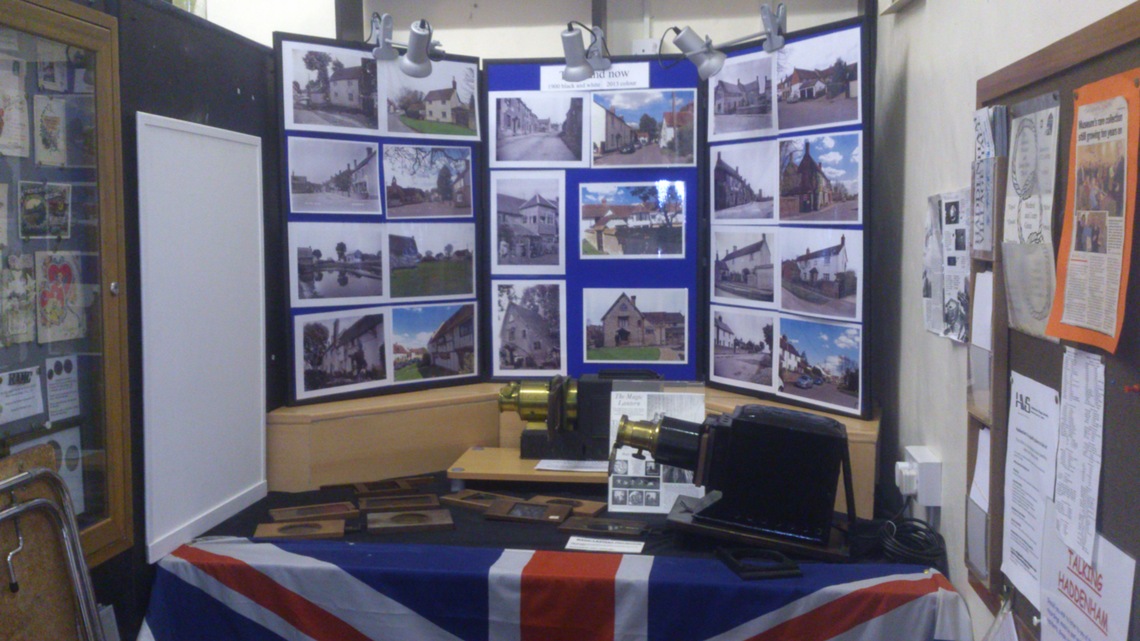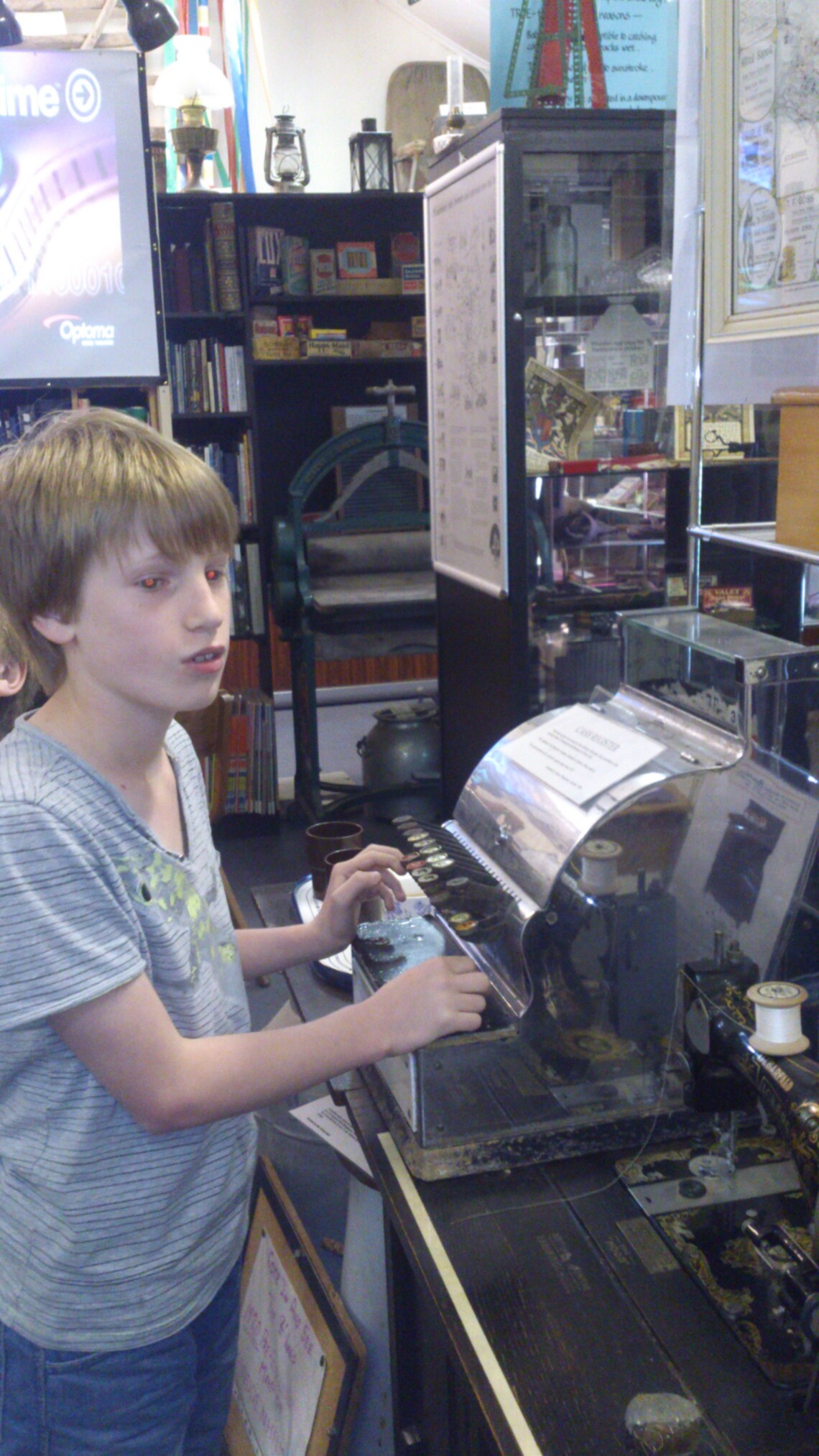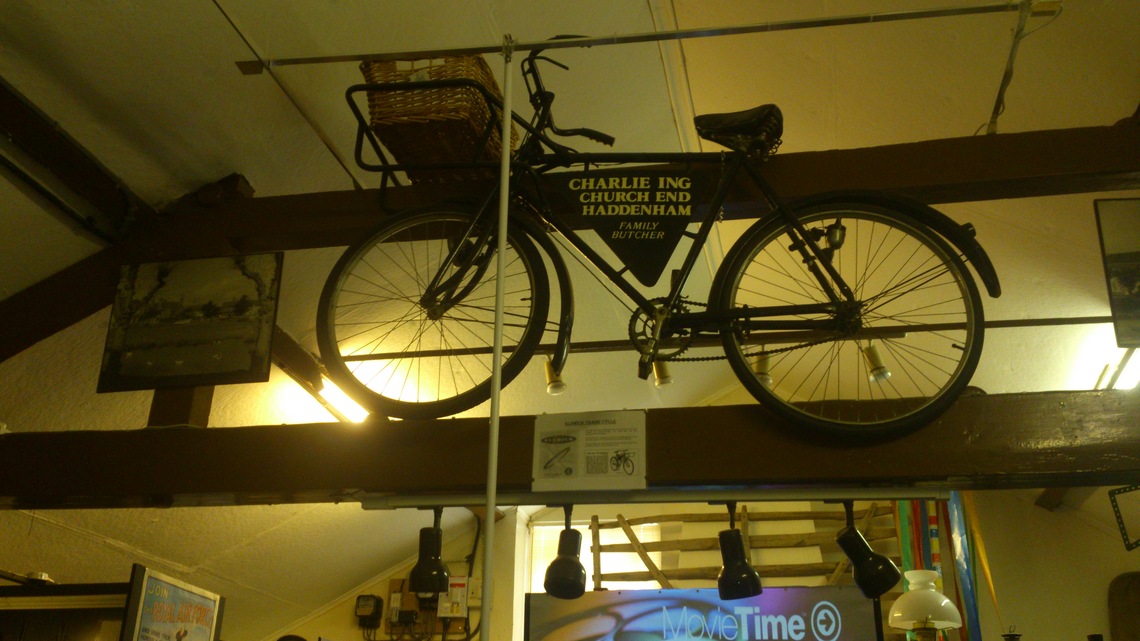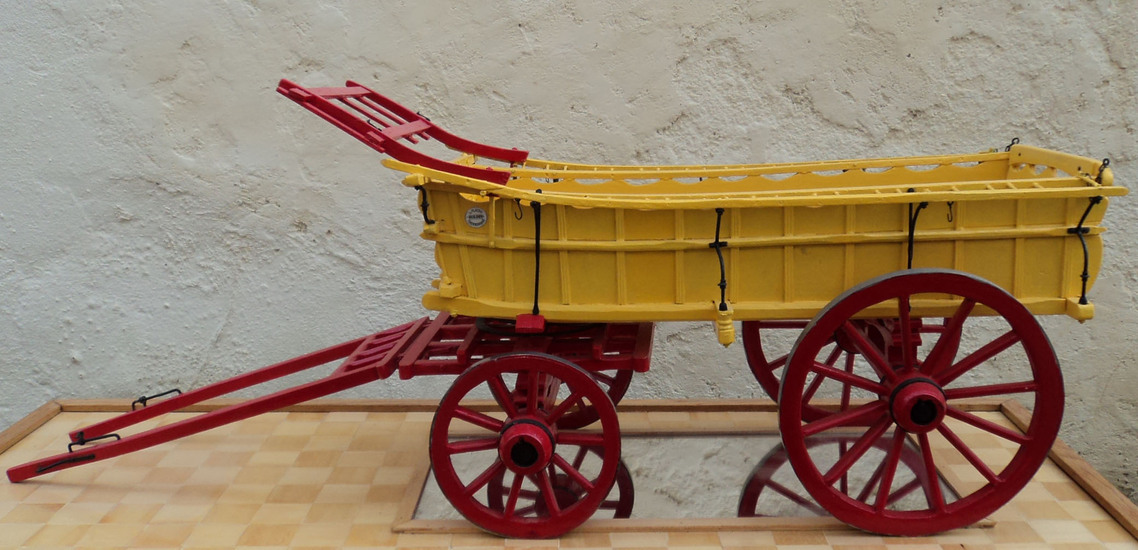Although Haddenham has no special place in history, its inhabitants have played their part in all that has happened through the ages. There are some finds from Roman times and earlier, there was an entry in the Domeday book, and there are signs of occupation from that time onwards, but the main story is the change from being an agricultural community to becoming a modern residential village with its diversity of occupations.
So Much To See
Some Photos Of The Numerous Displays, Visitors and Friendly Staff
You can see our Object of the Month on our facebook page.
One claim to fame is being the main witchert village. Witchert is the sub-soil of decayed limestone that was used to build so many of the cottages, houses, barns, chapels, and high garden walls that define Haddenham’s conservation area. The museum has one display devoted to witchert and indeed the building itself is constructed of the material.
Enclosure, by the Act of 1830, had a huge effect on the parish. The open fields and commons were hedged and fenced and the need for labour was greatly reduced. One museum display shows the before-and-after maps of the times.
In the same period the march of the machines was taking place. Another display shows the changes in farming from manual and horse-power through wind, steam, and diesel. Included in this display is a model of a Buckinghamshire barge waggon of the type made by James Plater’s Carriage Works in Townsend, Haddenham, around the end of the nineteenth century. This model was made by Ron Stiff of Meadle.
World wars left their mark on all communities and memorabilia from the times are on display. The airfield played an important role in World War 2 from where gliders were launched.
Many of the articles on display record the changes in the homes of Haddenham's folk.
